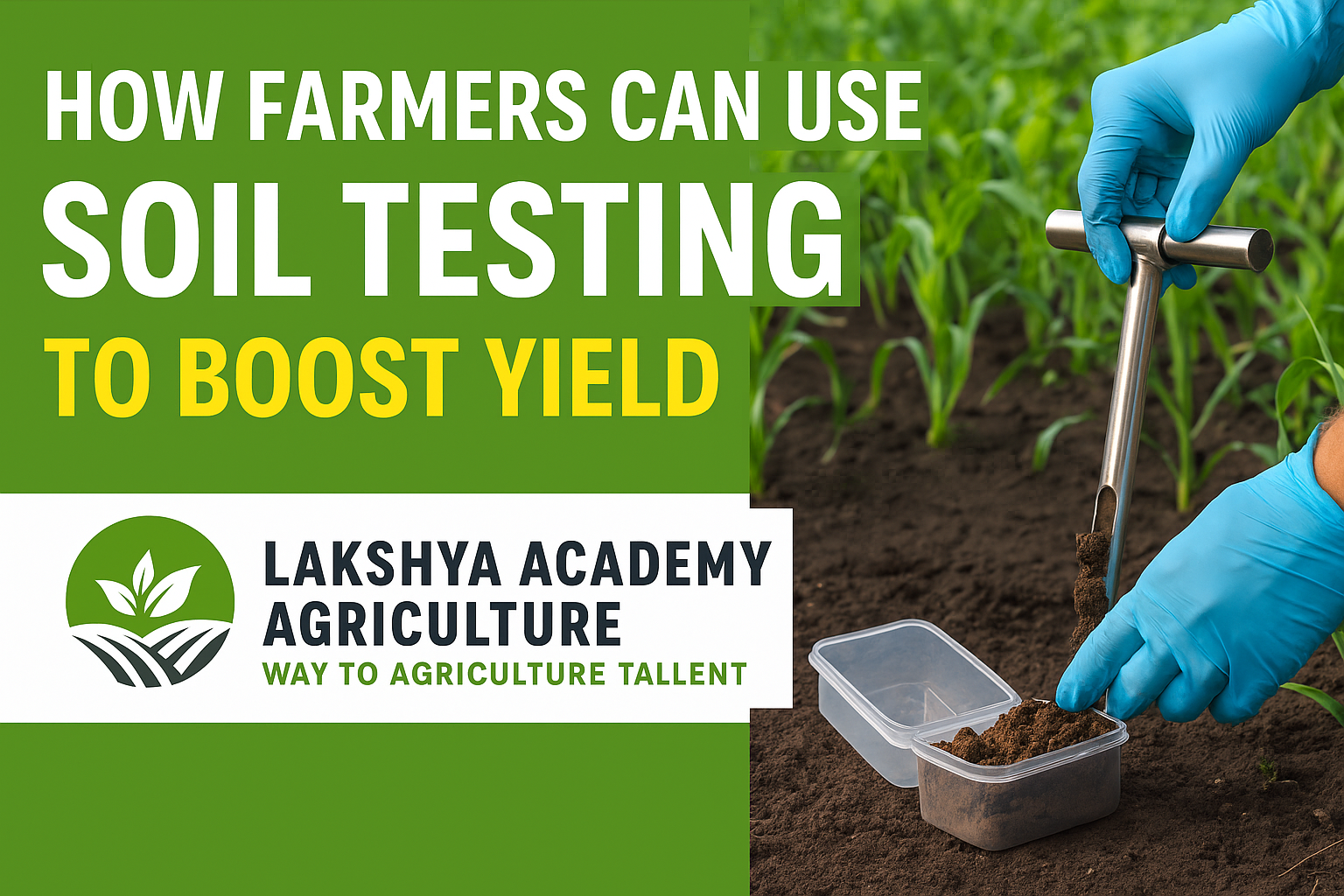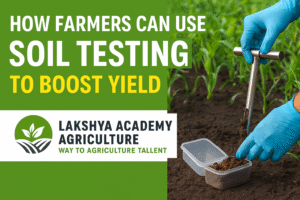🌱 Introduction
Farmers often invest in good seeds, fertilizers, and irrigation — but one of the most powerful and affordable tools to boost crop yield is still underused: Soil Testing.
Soil is the foundation of farming. If you don’t know what your soil needs or lacks, how can you give your crops the right nutrition?
As a Soil Science Expert and Agricultural Educator with over 14 years of experience, I’ve seen hundreds of farmers from Khargone, Indore, and across India transform their harvests just by understanding their soil better.
In this blog, I’ll explain what soil testing is, why it matters, and how you as a farmer can start using it to grow more and spend less.
✅ What Is Soil Testing?
Soil testing is the scientific process of analyzing soil to check its nutrients, pH level, organic matter, salinity, and texture.
A typical soil test tells you:
✅ Nutrient levels (NPK – Nitrogen, Phosphorus, Potassium)
✅ Soil pH (Acidic or alkaline)
✅ Micronutrient availability (Zinc, Sulphur, Iron, etc.)
✅ Organic carbon %
✅ Electrical conductivity (EC) – related to salt content
👉 In simple terms: It tells you what your soil has, what it lacks, and what crops will grow best in it.
✅ Why Soil Testing Matters for Farmers
Here’s what soil testing can do for your farm:
🌾 1. Boost Yield with Targeted Nutrition
Instead of applying random fertilizers, you can apply only what’s needed, in the right amount — improving growth and productivity.
“Rahul Bhai, I used your test-based fertilizer mix, and my soybean yield increased by 22%.”
– Ramesh Patel, Farmer from Barwaha
💰 2. Save Money on Fertilizers
You’ll stop wasting money on over-application or wrong choices. Many farmers unknowingly overuse urea, which harms long-term soil health.
A ₹250 soil test can save you thousands per acre!
🌱 3. Improve Soil Health Long-Term
Balanced nutrition = healthier soil = better crops for years. Excess salts and wrong pH levels damage microbial life — soil testing helps prevent that.
📍 4. Get Government Support Easily
If you have a valid soil test report, many government schemes (e.g., PM-Kisan, Agri-input subsidies) process faster. It also helps with precision farming eligibility.
✅ When & How to Do Soil Testing
📅 When to Test:
Once every 2 years (ideal)
Before major cropping seasons (Rabi/Kharif)
After long fertilizer use or crop failure
🧪 How to Collect a Soil Sample:
Choose your field → Divide large farms into small sections
Use a khurpi/spade to collect soil from 5–6 points in that section
Depth: 6–8 inches
Mix the samples, remove stones/roots, and fill in a zip bag or test kit pouch
Label properly with name, village, crop, and contact details
Submit your sample to:
Krishi Vigyan Kendra (KVK)
Agri Department Office
Private certified soil testing labs
👉 Cost ranges from ₹200–₹500 depending on location
✅ How to Read a Soil Test Report
A typical report will have:
Macro Nutrients (N, P, K) – Rated: Low / Medium / High
Micronutrients (Zn, Fe, S, etc.)
pH Level – Ideal range: 6.5 to 7.5 for most crops
Organic Carbon (%) – >0.5 is good
Recommendation Section – Crop-wise fertilizer suggestion
Need help reading it?
Contact a local agronomist or book a consulting session with me via GrowWithLakshya.com.
✅ What to Do After Soil Testing?
Apply Fertilizers as Recommended
Example: If N is low, use Urea or Ammonium Sulphate — but only in the suggested quantity.Adjust pH if Needed
Use lime to reduce acidity or gypsum to manage alkalinity.Use Organic Inputs
Add compost or green manure if organic carbon is low.Plan Your Crops Smartly
Choose crops based on your soil’s fertility map. Some soils are better for pulses, others for oilseeds or vegetables.
🧑🌾 Farmer Story: How Soil Testing Changed Everything
Vikram Chouhan, a farmer from Sanawad (Khargone), used soil testing for the first time in 2023. His field had high potassium but low phosphorus — something he never realized before.
With just one balanced fertilizer mix, he saved ₹1800/acre and saw a 15% increase in wheat yield.
“Rahul Sir’s advice opened my eyes. Now I test every season.”
📈 Conclusion: Don’t Farm Blind – Test Your Soil First
Soil testing is not an expense — it’s an investment.
Whether you’re a small farmer or managing 20+ acres, testing your soil regularly will help you:
✅ Grow better
✅ Spend smarter
✅ Protect your land for the future
📞 Need Help With Soil Testing?
We offer:
Soil sample collection support
Report analysis & personalized fertilizer plan
On-call farmer consultation (MP & India-wide)
👉 Book Your Soil Consultation Now
👉 Call Us @ +91-9752211997







